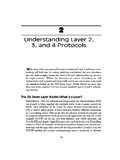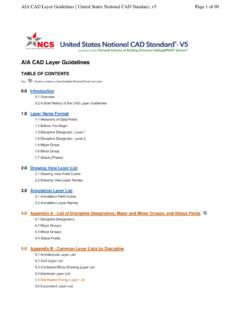Transcription of Standards for Purple Martin Housing
1 Standards for Purple Martin Housing Purple Martin Conservation Association 301 Peninsula Drive, Suite 6. Erie, PA 16505. Successfully attracting and hosting a Purple Martin colony depends on selecting quality Housing , having suitable habitat, and practicing active colony management. By educating yourself, you will be able to avoid common pitfalls often made by beginning landlords, and the martins will thrive as a result. Habitat & Location: Martin Housing should be placed in the most open spot available (at least 40', but pref- erably 60' from trees or buildings) and within 100' of human Housing or activity. Proximity to humans and a wide-open location and flight area will help protect the martins from predators. Vertical Accessibility: Martin Housing should raise and lower vertically on a telescoping pole, lanyard, or winch system. Housing will need to be lowered sometimes on a daily basis to remove House Sparrow and Euro- pean Starling nests.
2 Regular monitoring of active Martin nests is essential; landlords who do not monitor their colony will not know if they are losing martins to snakes, owls, hawks, parasite infestation, etc. Early detection will allow landlords to fix any problem before it affects the entire Martin colony. Height and Installation of Pole: Recommended height is 12-20'. The higher the Housing is placed, the more susceptible it is to wind damage. Poles should be set in concrete, with 18-25 below ground. Most manufac- turers offer mounting sockets or stakes, so that landlords can relocate or remove their poles. Compartment Interior: The minimum size for compartments is 6 x 6 , but research has determined that deeper compartments (measuring 7 x 12 from front to back) offer greater protection from predators and the elements, and will keep nestlings more comfortable. Adult martins are 8 long, so compartments must be large enough to accommodate 4-6 nearly-grown nestlings and both parents.
3 Houses with smaller rooms can be remodeled to offer larger, two-room suites (PMCA how-to info available). Spacious compartments also allow nestlings to spread out to keep themselves cool in hot temperatures. Nestlings are less likely to fledge prematurely and end up on the ground when they are kept comfortable and cool inside the house. Wood and natural gourds should have a natural (unpainted) interior. Metal or plastic Housing with flat, slippery floors could result in young developing permanently splayed legs a potentially fatal abnormality that can be prevented by providing textured subfloors in each compartment. Compartment access: Access to individual compartments during the nesting season is essential, because it facilitates regular monitoring, trapping and/or removal of sparrow and starling nests, and cleaning at the season's end. Houses that do not have hinged doors, access caps, or similar means of accessibility should be avoided.
4 Access doors can be added to natural gourds (PMCA how-to info available). Entrance hole: Traditional round entrance holes are generally 2-1/8 in diameter, but a range between 1-3/4 . and 2-1/4 is acceptable. Round entrances should be placed about 1 to 1-1/2 above the floor or porch. The starling-resistant crescent entrance should measure 3 wide and 1-3/16 tall (patterns available from the PMCA). Starling-resistant entrances should be positioned no higher than 1/2 above the porch or floor, or can be mounted flush with floor. Housing should have door plugs to prevent occupation by other birds during the non-breeding season. Material: Aluminum, thick plastic, wood, and natural gourds are all suitable materials for Martin Housing , pro- vided that the exterior of the house is white in color. White reflects heat, keeping Housing cooler in hot tem- peratures. Wooden Housing should be made from untreated material only.
5 Lumber of 3/4 stock will provide better insulation against heat and cold. Cedar, cypress, pine, or redwood work well. Plastic Housing should be of thick (preferably UV-resistant) material, and should not allow light to filter through the corners or elsewhere. Transparency creates a greenhouse effect ; this heat can be harmful or deadly for nestlings. A layer of insula- tion in the attic of plastic or metal Housing will protect martins during periods of extreme temperatures. Predator Guards: Predator guards should be installed on ALL active Housing . Any type or size of pole, wood or metal, is easily climbed by predators like snakes, raccoons, and squirrels. Pole guards are commercially avail- able, but landlords can also make their own. The top of the pole guard should be at least 4' above ground, no lower or large raccoons and snakes may bypass the guard. Pole guards that are properly installed will measure at least 4' from the top of the guard to the ground.
6 Aerial predators like hawks, owls, and crows commonly raid Martin Housing . Conventional 6 x 6 compartments do not offer much protection from these predators, who can easily reach nestlings in shallow rooms. Larger, deeper compartments will allow martins to place their nests further from the entrance, and from a predator's reach. All Housing even Housing with deep compart- ments should be equipped with an external owl guard. If commercial guards are not available, landlords can fasten hardware cloth (2 x 4 mesh) to the outside of the house, creating a protective cage that can be removed for nest checks and monitoring. (PMCA how-to info available for pole & house guards). Common features to incorporate in all types of Housing : Since Martin houses are placed in the open, fully exposed to wind, rain, and summer sun, good ventilation, drainage, and insulation are important features. Materials and construction methods should be chosen for their ability to withstand wind and hailstorms.
7 The roof overhang can be extended to help protect compartments from rain. Ventilation holes should be drilled at an angle or placed under the roof overhang to prevent water from funneling into the compartments through these ventilation holes. Drain holes in the bottom of each compartment will allow wet nests to dry more quickly. Raised subfloors and larger compartments also offer protection from the rain. Nestlings under 10 days old are unfeathered and are prone to hypothermia, so it is especially important that they do not become chilled in a rain-soaked nest. Housing should be easy to maintain, and built to last. Both house and pole benefit from treatments to reduce the effects of weathering and rusting. Winch & pulley and telescoping systems should be oiled regularly, and rope and cables should be checked routinely for signs of wear. Frayed rope or cable should be replaced. Some manufacturers of Martin Housing offer accessory items, such as traps for sparrows and starlings.
8 Housing that accommodates such insert traps has a clear advantage, as removing unwanted birds from Housing will be quicker and easier. Some manufacturers offer extra perches and owl guards, which are beneficial items. The PMCA offers CDs and tapes of Martin vocalizations that are helpful in attracting martins to a new site. Literature required: Before buying or setting up Martin Housing , take the time to read up on the following topics it will make your efforts more successful. The breeding range of Purple Martins in North America How to determine if your yard meets the Martin 's habitat requirements How to position Housing appropriately When to open Housing in spring The importance of preventing other bird species from nesting in Martin Housing . (Non-native House Sparrows and European Starlings are controlled through nest removal, trapping, shooting, and use of starling-resistant entrances. Native species, such as bluebirds, Tree Swallows, wrens, and flycatchers are all federally protected, and should be accommodated by adding suitable Housing for their use.)
9 Native bird species can share your yard with martins, but landlords need to be aware of how to manage all the Housing correctly.). Some Good Information Sources: The Complete Birdhouse Book by Donald and Lillian Stokes, Little, Brown and Company, 1990. Stokes Purple Martin Book by Donald and Lillian Stokes and Justin Brown, Little, Brown, and Company, 1997. Enjoying Purple Martins More by Richard A. Wolinski, Bird Watcher's Digest Press, 1994. Homes for Birds, Department of the Interior, Fish and Wildlife Service, 1991. How to Attract Purple Martins, by James R. Hill, III, Purple Martin Update, 1988. Purple Martin Conservation Association 301 Peninsula Drive, Suite 6 Erie, PA 16505. phone 814-833-7656 fax 814-833-2451.



